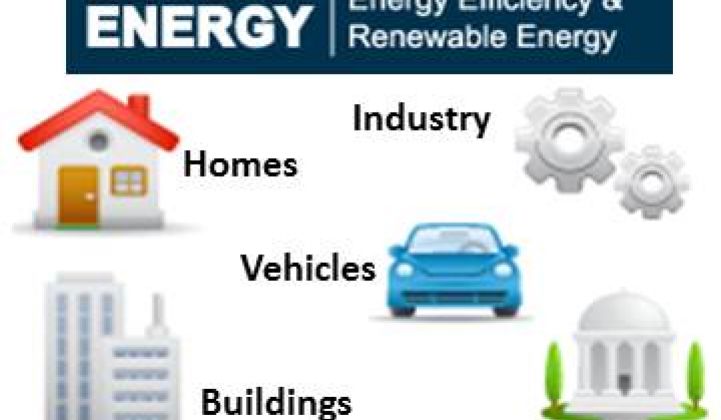Nothing could be better for greentech than spending on energy efficiency.
The stated mission of the National Association of Energy Service Companies (NAESCO) is "to promote efficiency as the first priority in a portfolio of economic and environmentally sustainable energy resources and to encourage customers and public officials to think energy efficiency first.”
It is estimated that every dollar spent on efficiency improvements saves two to four dollars in energy expenditures. “Since 1990,” according to James Dixon, a Con Edison Energy vice president and the current chair of NAESCO, “the energy service industry has provided $50 billion in energy savings.”
That’s a lot of money freed up to invest in renewables and other infrastructure. The industry has, over the last two decades, generated $25 billion in public infrastructure improvements and created roughly 330,000 jobs, according to Dixon. Every $1 million of project value “is estimated to create about 10 direct jobs in engineering, construction and equipment manufacturing.” He added, “The income created by these direct jobs provides another 10 to 12 indirect jobs.”
The 83 NAESCO member companies include multinational giants and local experts. They and other ESCOs, which specialize in developing, building, finding financing for and maintaining energy efficiency improvements for business and residential facilities, as well as guaranteeing, measuring, monitoring, and verifying energy savings, are gathering October 31 through November 2 in San Diego for their annual conference.
Director of Communications Meghan Cieslak and Senior Program Manager Nina Lockhart said the conference will offer presentations on two levels: 1) day-to-day efficiency operations and 2) higher-level strategic and policy concerns. Highlights they mentioned include sessions on coming opportunities in federal programs, on how California has led in efficiency breakthroughs, and on coming opportunities in making data centers more efficient.
Former Colorado Governor Bill Ritter, Jr. will keynote. Economist Michael Noel will discuss near and midterm expectations for the U.S. economy and Los Angeles Times Washington-watcher Doyle McManus will talk about what to expect from there.
Another important aspect of the energy efficiencies created by ESCOs, Cieslak and Lockhart said, is that they are at least recession-proof and probably recession-breakers. This is because they save much more than they cost. “If anything,” Cieslak said, “the economy getting worse drives our growth, because as state budgets get tight, they need to find creative ways to make capital improvements. Performance contracting gives them the ability to do that and save money at the same time.”
A new report on ESCOs is due soon from Lawrence Berkeley National Laboratory (LBNL) researchers. It should have new and definitive numbers, but the 2009 LBNL report found, according to Cieslak, that “despite a general downturn in the broader economy” and “the onset of a severe economic recession,” the energy service sector “managed to grow at about 7% per year between 2006 and 2008.” That report predicted “an average annual growth rate of 26% per year between 2009 and 2011” and aggregate revenue growth of $7.1 billion to $7.3 billion in 2011.

The MUSH market constitutes the majority of ESCO customers. It is made up of municipal (state and local) buildings, universities, schools (K-thru-12, community colleges, etc.) and hospitals.
During the halcyon days of economic expansion, NAESCO’s policy agenda included many of the familiar items on the other renewable industries’ wish list, including putting a price on emissions, putting in place a national efficiency standard and providing tax credits for efficiency measures on a stable, long-term basis. Those are now on the back burner.
NAESCO now has three legislative priorities. First, the group is working to resist rollbacks at the state level undertaken by newly elected governors who came to office with mandates to cut spending and who may not understand that spending on energy efficiency saves taxpayers’ money.
Second, NAESCO is lobbying hard against a proposed SEC rule which would require ESCOs to register as municipal securities advisors. This would make ESCOs subject to SEC regulatory oversight. If instituted, such regulation would likely slow efficiency efforts and increase their cost. Congress, NAESCO contends, “specifically exempted engineering firms” from this extra, burdensome level of oversight.
The third NAESCO objective is to obtain from the Obama administration an executive order requiring the Department of Energy to make the federal Energy Savings Performance Contracts (ESPC) program a high priority. Revenue-neutral because it is financed out of money now wasted on energy, the ESPC program could, according to Dixon, “create 35,000 jobs a year, save energy and reduce government utility and administration costs.”
The program matches ESCOs with private-sector financing for federal building efficiency retrofit projects “at no net cost to the government,” according to Dixon, because costs for “new technologies as well as equipment upgrades are to be paid back out of the energy savings over the life of the contract.”
The program also creates all the same direct and indirect job and economic benefits of other efficiency projects, making it a recession fighter. It creates “incentives for business and institutions to find ways to save energy and dollars” and puts a “skilled workforce” that is “currently suffering Great Depression-levels of unemployment” back to work “in communities across the country.”
It would seem that the ESPC program is a jobs bill for which the President does not have to beg the approval of the tightfisted House of Representatives, raising the question of what might be holding up that executive order.
There will be answers at the NAESCO conference this week.



